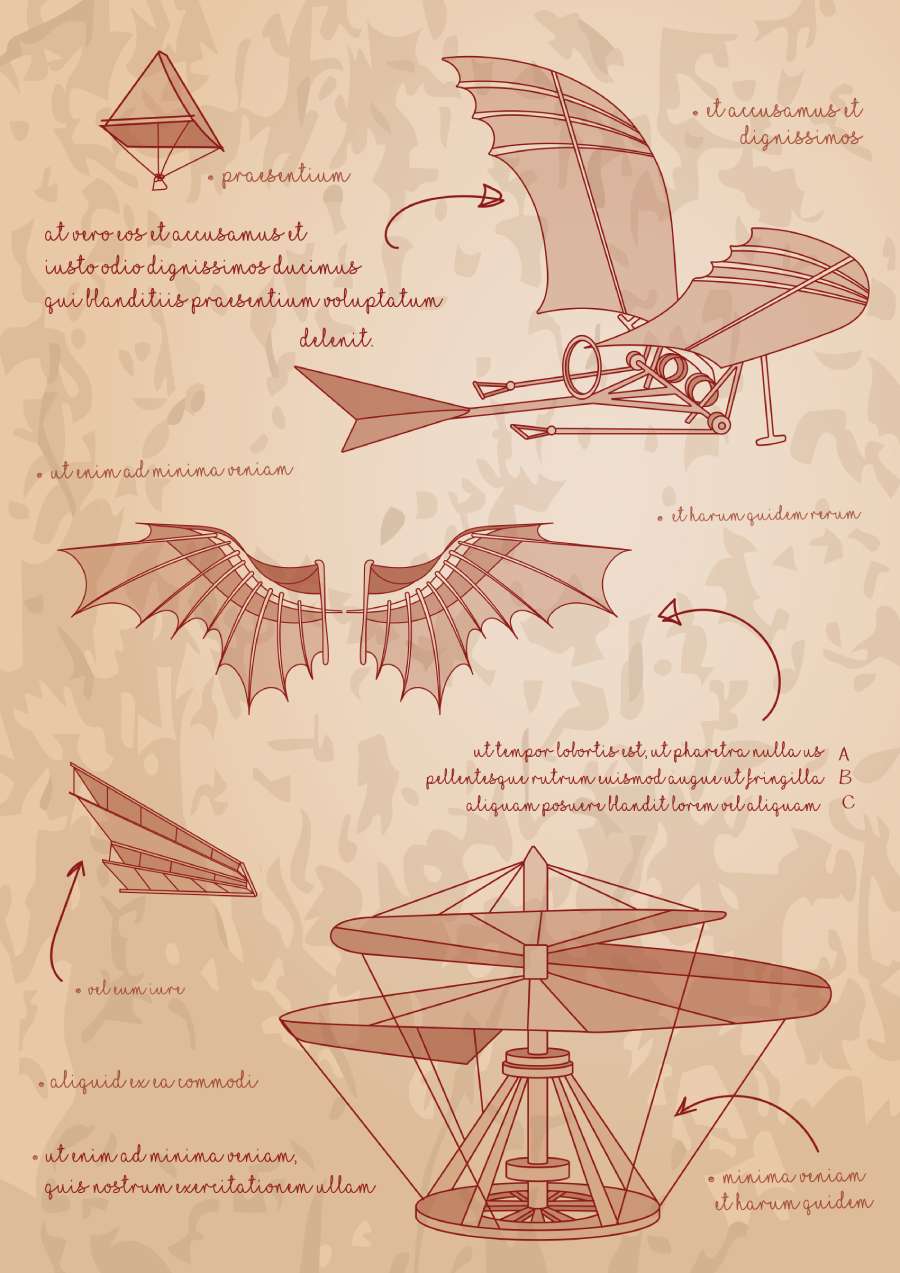LEONARDO DA VINCI: THE RENAISSANCE PIONEER OF MECHANICAL ENGINEERING

A true Renaissance mastermind, Leonardo da Vinci effortlessly bridged the gap between art, science, engineering, and mathematics. From the sublime elegance of the Mona Lisa to ingenious designs for flying machines, armored vehicles, machine tools and robots, his works cement his status as one of the greatest geniuses in human history.
Leonardo Da Vinci (1452-1519) is best known as the artist who created paintings like the ‘Mona Lisa’ and ‘The Last Supper’.
For the better part of four hundred years, his fame rested on his achievements as a painter and his paintings are regarded as amongst the greatest masterpieces of all time.
But one of the lesser-known facts is Da Vinci's priceless contributions to mechanical engineering. His designs, experiments, and observations laid the foundation for modern mechanical engineering, influencing the work of later inventors and engineers.
Among Da Vinci’s inventions is a whole collection of proto-machine tools.
Lathe Designs
Around the year 1500, the artist-engineer sketched a lathe with a three-bearing head stock as well as a screw cutting machine. The latter consisted of a flat table with a ‘cutter block’ sliding across at right angles to the material being threaded. The crank, which rotates the stock, also ‘feeds’ the cutting block through a series of gears, at a rate designed to produce a specific thread pitch. Da Vinci’s drawing includes illustrations of alternative gears, which would allow for different screw pitches to be cut on the same machine.
He conceived the lathe as treadle powered, and appears to have envisioned it to cut screw threads. A different drawing by Da Vinci shows a lathe also powered by a treadle. However, in this case, the crank is supported by two bearings to enhance rigidity, and beyond the crank, a flywheel has been added to the design to produce steadier, uni-directional rotation. The tailstock on this lathe is fixed, but a threaded centerpiece permits handling of work pieces of various lengths.
Pipe Boring Machine Design
Da Vinci also made a very detailed drawing of a pipe-boring mill. The design was considered so complete that a scale model was crafted from it and put on display at the London Science Museum. According to A Short History of Machine Tools by LTC Rolt, “The most remarkable feature of this machine is that the screw clamps which hold the workpiece in position for boring are interconnected by pinions with a ring gear, so as to be self-centering." This design is a precursor of the self-centering chuck.
Grinding Machine Designs

Da Vinci also sketched a wide array of grinders, including one designed to grind curved mirrors and an ‘internal’ grinder. The Mirror Grinding Machine was designed with gears and a rotating tool for precise grinding, enabling the creation of both concave and convex mirrors. The intricate gear system allowed for adjustable speeds, enhancing the precision and quality of the surface finish.
File-Cutting Machine: This machine, depicted in the Codice Atlantico, a 12-volume, bound set of drawings and writings by Leonardo da Vinci was designed to be automatic, driven by a falling weight and a pulley system, demonstrating a mastery of automation and mechanical efficiency.
Other Notable Designs by Da Vinci:
33-Barreled Machine Gun: While not built, this design, featuring multiple barrels in three rows, influenced the design of modern machine guns.
Aerial Screw (Helicopter): Leonardo's concept of a helical air screw, envisioned as a device that could lift off the ground by spinning rapidly, foreshadowed the development of helicopters.
Flying Machine: Leonardo also designed a flying machine with a crank-powered system for flapping wings, demonstrating his interest in flight mechanics.
Mechanical Jacks: Leonardo designed mechanical jacks for lifting heavy loads, reflecting his understanding of mechanics and engineering principles.
Robotics
Da Vinci’s creations span the gamut of robotics, including human-like and animal-like designs. Although many of Da Vinci’s designs are incomplete, they were ahead of their time, and they have since served as inspiration for modern robots in the medical and astronomy fields.
Da Vinci's self-propelled cart is an invention considered the ancestor of the modern automobile. Constructed out of five different types of wood, the cart was five and a half feet long and nearly five feet wide and could theoretically move over 40 yards before needing to be rewound.
The drawings of Da Vinci’s cart were first uncovered in the early 1900s by historian Girolamo Calvi, who nicknamed the cart ‘Leonardo’s Fiat’. For decades, attempts to recreate his design failed, and researchers couldn’t understand why. Finally, in 1997, it was discovered that the fault lay not in Da Vinci’s design but in researchers’ understanding of it; the design’s cart springs were intended to regulate the cart’s drive mechanism, but researchers had been using them in an attempt to drive the car itself. In 2004, a working replica of Da Vinci’s cart was created in Florence.
These replicas bore a vague but unmistakable resemblance to the Mars Land Rover. This is now considered to be the first humanoid robot ever created and Da Vinci’s design would later be utilized by NASA to aid in the construction of planetary exploration robots.
Da Vinci also created a hydraulically powered machine that could be programmed to ring a bell. Another robot was designed to beat a drum, and a third resembled a modern-day drone. Today, these and other designs have been utilized to create even more robots, including the medical machine that bears his name: the Da Vinci Surgical System, which is a robotic platform that allows surgeons to perform complex minimally invasive procedures with precision and accuracy, using small incisions.
|
Da Vinci also made a very detailed drawing of a pipe-boring mill. The design was considered so complete that a scale model was crafted from it and put on display at the London Science Museum. |
The Multi-Talented Genius
Leonardo da Vinci was a true Renaissance mastermind, whose boundless curiosity and innovative spirit continue to inspire awe. Da Vinci effortlessly bridged the gap between art, science, engineering, and mathematics, and his detailed designs revealed a profound understanding of the interconnectedness of all disciplines.
From the sublime elegance of the Mona Lisa to ingenious designs for flying machines, armored vehicles, machine tools and robots, Da Vinci's works cement his status as one of the greatest geniuses in human history.
Tech Talks is a column by industry veteran and journalist Reji Varghese that talks about the latest advancements in Machine Tools, provides snippets from history, interesting facts, etc. about the Machine Tool industry.
 |
Reji Varghese |




 Facebook
Facebook.png) Twitter
Twitter Linkedin
Linkedin Subscribe
Subscribe